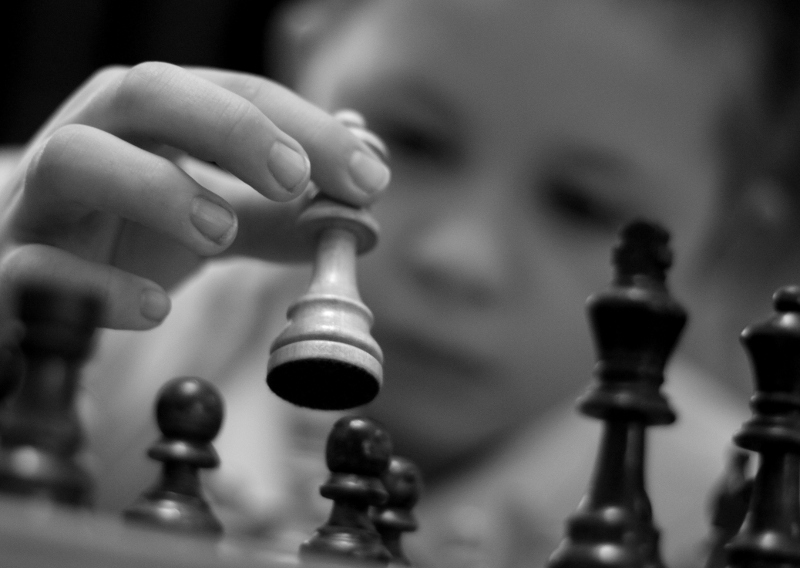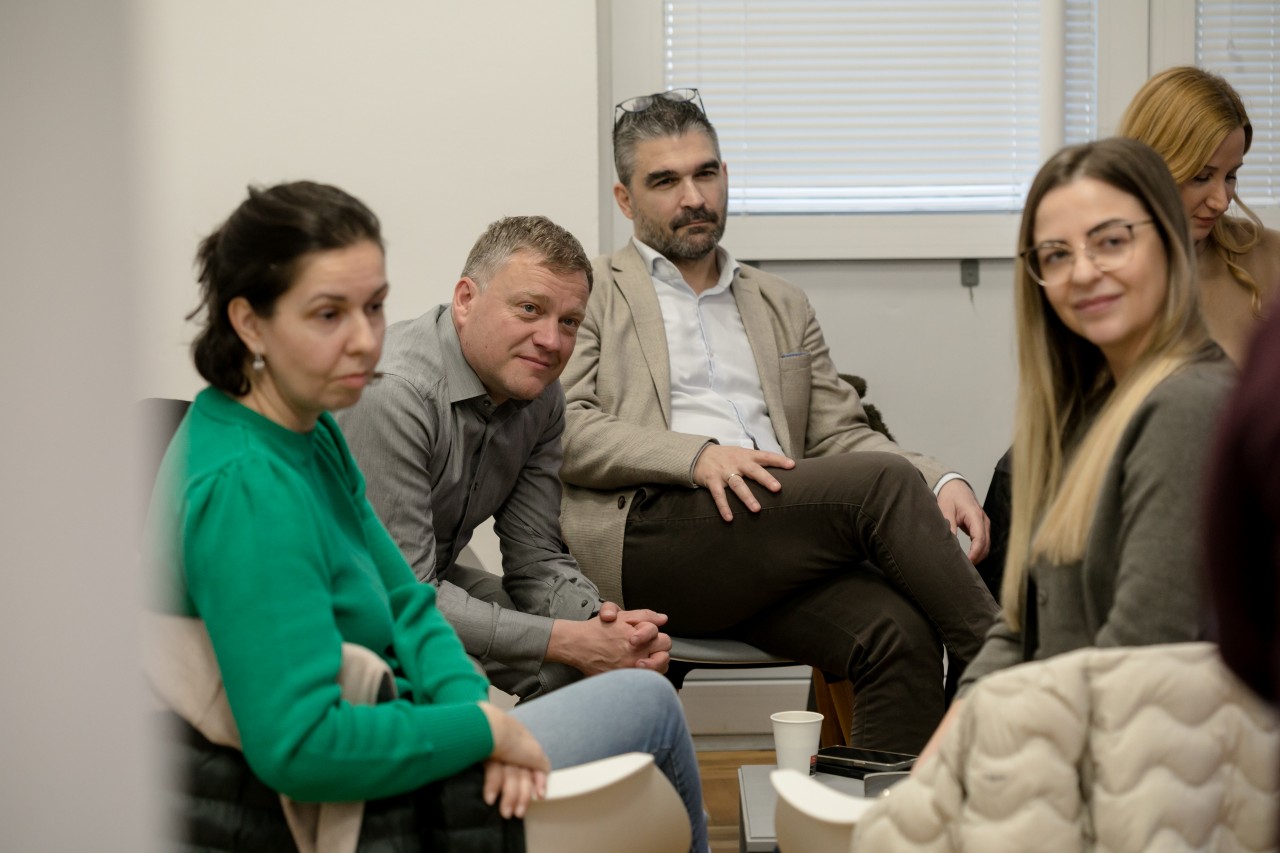Is a baby born with certain abilities or can the intelligence of the baby be increased significantly?
It has long been believed that the key milestones in a child’s development are achieved automatically, purely as a result of the child’s growing older over time and/or the baby’s genetic make up.
This theory dictates that the child walks at age one due to some kind of built-in mechanism””rather like an alarm clock set to ring at twelve months that triggers the ability to walk.
Simultaneously the alarm clock for talking rings, and he begins to say words. The same theory postulates a preset alarm clock for each and every significant stage of development. This theory suggests that the mere passage of time leads to the development of human ability and that the acquisition of ability is as inevitable as the sunrise and the sunset.
This is called “readiness.” For example, the alarm clock rings at six years of age and the child supposedly has “reading readiness.”
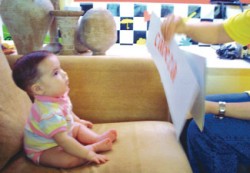 If reading readiness takes place at six years of age as the conventional thinking says it does, then how can we explain that thirty percent of the children in school system in the United States will fail to learn to read properly by the age of eighteen? Why did their alarm clocks fail to ring at age six or seven? Why has it still not gone off by the time they are eighteen?
If reading readiness takes place at six years of age as the conventional thinking says it does, then how can we explain that thirty percent of the children in school system in the United States will fail to learn to read properly by the age of eighteen? Why did their alarm clocks fail to ring at age six or seven? Why has it still not gone off by the time they are eighteen?
It is even harder to explain the thousands of brain-injured children who have actually learned to read by the age of three. They were more than ready. They think reading is the greatest invention since mothers.
Why did their reading “alarm clocks” ring early?
It is true that at twelve months of age the average child will walk. But is this a cause-and-effect relationship? Is it the passage of time that has brought about this new ability?
Obviously not.
After living night and day with well children who were given a superb environment in which to develop from birth, we had to ask ourselves, Why do they walk and talk and use their hands earlier than their peers?
Do they all just happen to have better genes?
Why do their alarm clocks go off before they are supposed to do so?
Why are they learning earlier?
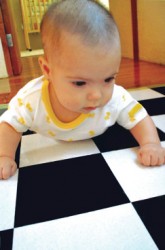 One of the most exciting discoveries we were to make was that the process of growth and development is a product of the amount of stimulation in the child’s environment. It is not determined by a preset alarm clock or superior genes.
One of the most exciting discoveries we were to make was that the process of growth and development is a product of the amount of stimulation in the child’s environment. It is not determined by a preset alarm clock or superior genes.
We therefore began to look for every way we could to “set off the alarm clocks” for brain-injured children, and we have found hundreds.
We discarded the model of the preset alarm clock. What we had discovered was a simple and elegant truth:
The brain grows by use, not a preset alarm clock.
Brain growth can be speeded by increased stimulation at any point in life, but most especially at those times when it is growing fastest: in the first six years of life.
The first six years of life are precious because during this time the brain grows at a tremendous rate. Brain growth is most dramatic in the first year.
The development of the newborn’s visual pathway offers clear proof of the dramatic growth of the brain in the first year of life.
A well newborn is, like other little creatures, functionally blind in a practical sense. He can see only light and dark. He has a “light reflex.” This means that if we shine a light into his eyes, the pupil will constrict to prevent too much light from entering the visual pathway. If we turn off the light, the pupil will again dilate to allow an acceptable amount of light to enter his visual pathway.
The significance of gaining the ability to see earlier is far greater. The average baby is trapped in a visually ordinary room at the very moment when his brain is growing at its fastest rate. He is capable of taking in a tremendous amount of information but his visual pathway is not sufficiently developed to do so.
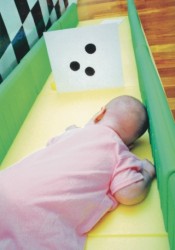 The newborn who is stimulated, and thereby gains the ability to see weeks or even months earlier, has the wonderful opportunity to see everything that is around him during the period when his brain is growing so very rapidly.
The newborn who is stimulated, and thereby gains the ability to see weeks or even months earlier, has the wonderful opportunity to see everything that is around him during the period when his brain is growing so very rapidly.
This visual ability then leads to the maturation of other pathways. Once he can see, he begins to understand more easily what we are saying to him. When he can see, his need to move is hugely increased. As a result, he tries harder to move and moves more. This movement both stimulates his sense of touch and helps to further develop his vision. His increased movement helps his chest to grow and as a result his respiration improves. This better respiration allows him to make sounds more easily so he can communicate his needs better.
Thus begins a happy cycle of events, each one touching off yet another spark, each spark igniting yet another new ability.
The more the brain is used the more it grows, and the more capable the baby becomes. This is the very definition of using the brain.
This stimulation should be done on purpose, not by accident.
The brain-injured child cannot afford to be stimulated by accident and, in truth, neither should the well newborn baby.
The ability of the child is a product of stimulation and opportunity, not of a preset alarm clock or a predetermined genetic design.
The reality of how the brain really develops turns out to be much better than the old idea of how the brain develops. The truth turns out to be much better than the fiction.

